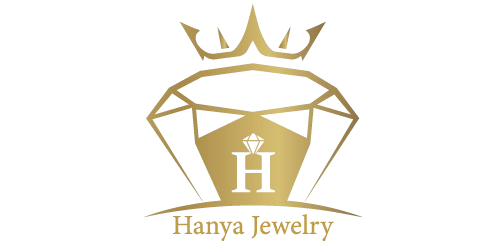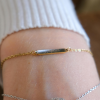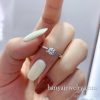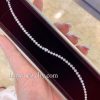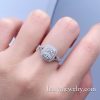Choosing a diamond ring is an exciting yet overwhelming experience. With various styles, cuts, and settings, the decision can feel daunting. Whether you’re planning to propose or looking for the perfect piece for yourself, understanding how to pick the perfect diamond is essential. This guide will walk you through everything you need to know to make an informed decision, ensuring your choice is both beautiful and meaningful.
Understanding Diamonds: The 4Cs
When learning how to pick the perfect diamond, it’s essential to understand the 4Cs: Cut, Color, Clarity, and Carat weight. These factors determine the overall quality and value of a diamond.
1. Cut
The cut of a diamond refers to how well it has been shaped and faceted. It significantly affects the diamond’s sparkle and brilliance. The quality of the cut is graded on a scale from Excellent to Poor. Here’s a brief overview:
- Excellent: Reflects light beautifully, showcasing maximum brilliance.
- Very Good: Nearly as brilliant as Excellent but with slight differences.
- Good: Offers decent sparkle but may not exhibit the same fire as higher grades.
- Fair: Light reflects poorly, leading to a dull appearance.
- Poor: Lacks brilliance and looks lifeless.
The most popular shapes include:
- Round: The most popular and timeless shape, known for its brilliance.
- Princess: A modern cut, square or rectangular, offering excellent sparkle.
- Oval: An elongated shape that creates a larger appearance.
- Emerald: Features a rectangular cut with step-like facets for a vintage look.
- Marquise: An elongated diamond with pointed ends, maximizing carat weight.
2. Color
Diamond color refers to the presence of any hues in the diamond. The GIA (Gemological Institute of America) color grading scale ranges from D (colorless) to Z (light yellow or brown). Here’s a breakdown:
- D-F (Colorless): High-quality diamonds that exhibit no color.
- G-H (Near Colorless): Appears colorless in most settings but may show slight color when compared to higher grades.
- I-J (Slightly Tinted): Slightly noticeable color but can still appear beautiful in certain settings.
- K-M (Light Yellow): Noticeable color; suitable for budget-conscious shoppers.
- N-Z: Tints of yellow or brown become apparent; usually not preferred for fine jewelry.
3. Clarity
Clarity measures the presence of inclusions or blemishes in a diamond. The GIA clarity scale ranges from Flawless (no inclusions visible under 10x magnification) to Included (inclusions visible to the naked eye). Here are the clarity grades:
- Flawless (FL): No inclusions or blemishes visible.
- Internally Flawless (IF): No inclusions; minor surface blemishes may exist.
- Very Very Slightly Included (VVS1 & VVS2): Minute inclusions that are difficult to see under magnification.
- Very Slightly Included (VS1 & VS2): Minor inclusions visible under magnification but difficult for the untrained eye to see.
- Slightly Included (SI1 & SI2): Inclusions that are visible under 10x magnification and may be noticeable to the naked eye in certain lighting.
- Included (I1, I2, I3): Inclusions that are visible to the naked eye and may affect transparency and brilliance.
4. Carat Weight
Carat weight refers to the weight of the diamond. One carat equals 0.2 grams. Larger diamonds are rarer and typically more expensive. However, size should not be the sole consideration; balance carat weight with the other Cs for the best value. For instance, a well-cut diamond with a lower carat weight may appear larger and more brilliant than a poorly cut larger diamond.
Read More: 4Cs of diamond
How to Pick the Perfect Diamond: Key Considerations
Now that you understand the 4Cs, it’s time to explore additional factors that will help you learn how to pick the perfect diamond for your ring.
1. Set a Budget
Before shopping for a diamond ring, establish a budget. This will help narrow down your options and prevent overspending. Diamonds can vary significantly in price, so knowing your limit can guide your choices. Consider factors like:
- Your financial situation: Be realistic about what you can afford.
- Long-term investment: Diamonds can appreciate in value, so consider the potential for resale.
- Future expenses: Remember that you may have other costs related to the wedding or personal finances.
2. Decide on the Ring Style
The ring’s style plays a crucial role in how the diamond is presented. Here are some popular styles to consider:
- Solitaire: A single diamond set in a simple band; classic and elegant.
- Halo: A center diamond surrounded by smaller diamonds, enhancing the overall sparkle.
- Three-Stone: Symbolizes the past, present, and future; features a center diamond with two smaller stones.
- Pavé: The band is set with smaller diamonds, creating a continuous sparkle.
- Vintage: Often features intricate details and unique settings.
Consider the recipient’s personal style and preferences when choosing the ring style.
3. Choose the Right Metal for the Band
The metal used for the band can impact the overall look of the ring. Common choices include:
- Yellow Gold: Timeless and warm, ideal for vintage styles.
- White Gold: Modern and sleek; complements colorless diamonds beautifully.
- Rose Gold: Offers a romantic and unique look; pairs well with various diamond colors.
- Platinum: Durable and hypoallergenic; a luxurious option for those who want a lasting piece.
Consider the recipient’s skin tone and jewelry preferences when selecting the metal.
4. Research Reputable Jewelers
Finding a trustworthy jeweler is crucial to ensure you’re getting a quality diamond. Look for:
- Certifications: Ensure the diamonds come with grading reports from reputable organizations like GIA or AGS.
- Reviews and Recommendations: Read customer reviews and ask for recommendations from friends or family.
- Return Policy: A good jeweler should offer a clear return policy and warranty for their products.
- Customer Service: A knowledgeable and friendly staff can make your shopping experience enjoyable.
5. Consider Ethical Sourcing
More consumers are concerned about the ethical implications of their purchases. Ensure the diamond you choose is sourced responsibly. Here are some ways to verify:
- Conflict-Free Diamonds: Look for diamonds that comply with the Kimberley Process, which ensures they are not sourced from conflict zones.
- Lab-Grown Diamonds: Consider lab-grown diamonds, which are ethically produced and often more affordable.
6. Get a Professional Opinion
Once you’ve narrowed down your options, consider seeking a professional opinion. A trusted jeweler or gemologist can help evaluate the diamonds you’re considering. They can provide insights into the quality, authenticity, and value of the diamonds, ensuring you make an informed choice.
7. Trust Your Instincts
Ultimately, choosing a diamond ring is a personal decision. Trust your instincts and choose a diamond that resonates with you or your partner. The perfect diamond should evoke emotion and represent a significant milestone in your relationship.
Conclusion
Learning how to pick the perfect diamond involves understanding the essential elements of the 4Cs, considering your budget and personal style, and conducting thorough research. By following these guidelines, you can make an informed decision that ensures you choose a stunning diamond ring that will be cherished for a lifetime.
With the right knowledge and a thoughtful approach, picking the perfect diamond ring can be a fulfilling and memorable experience. Whether you’re celebrating an engagement, anniversary, or special occasion, the right diamond will symbolize your love and commitment for years to come.
